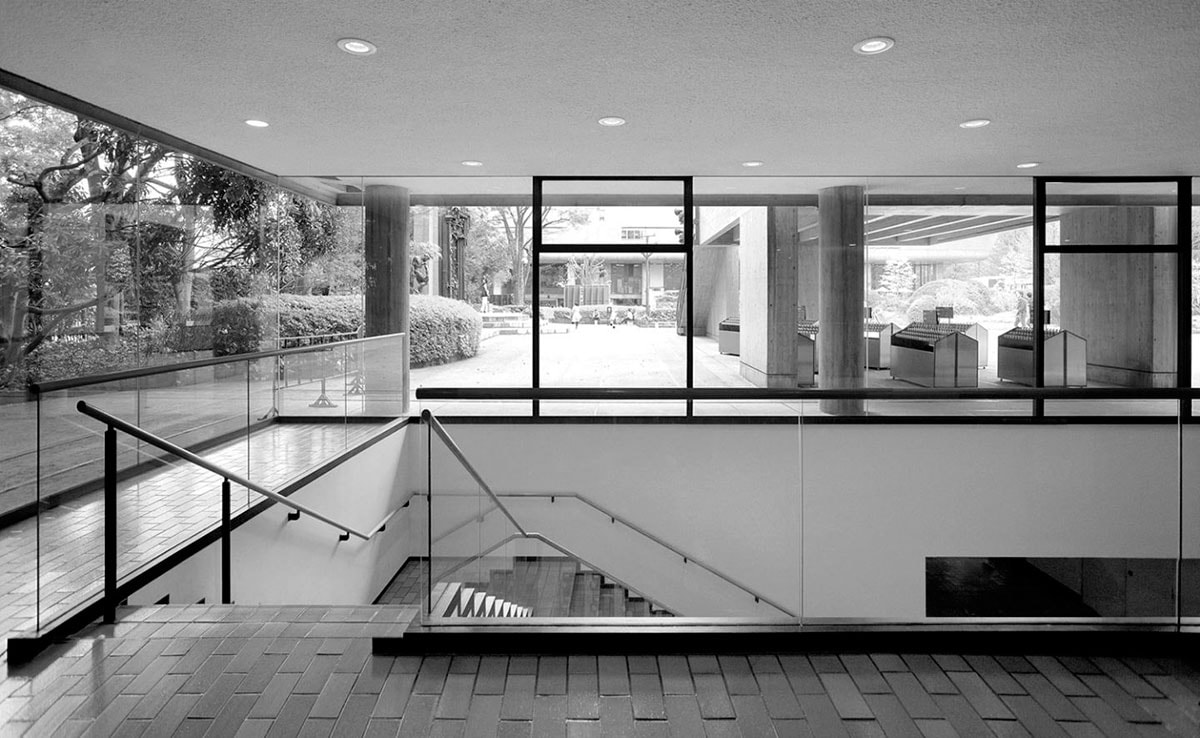

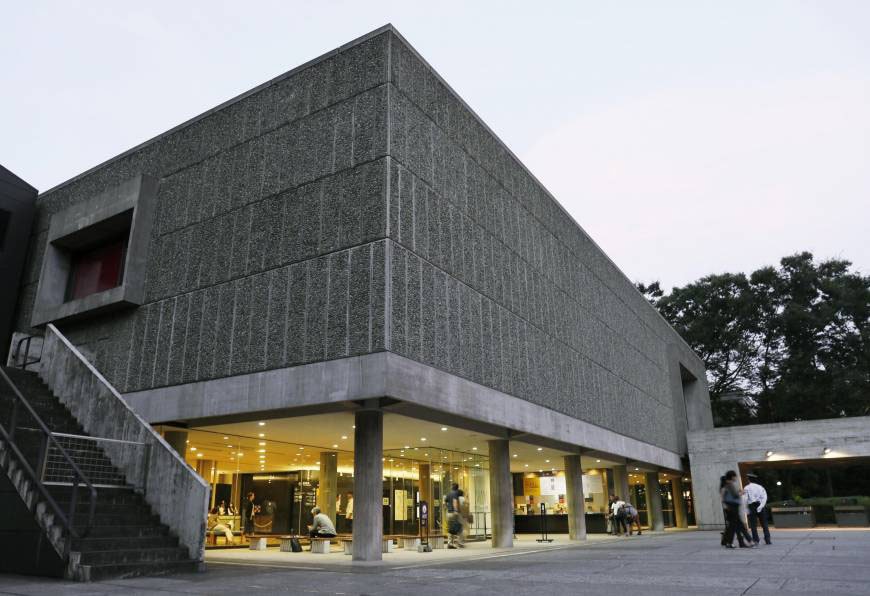
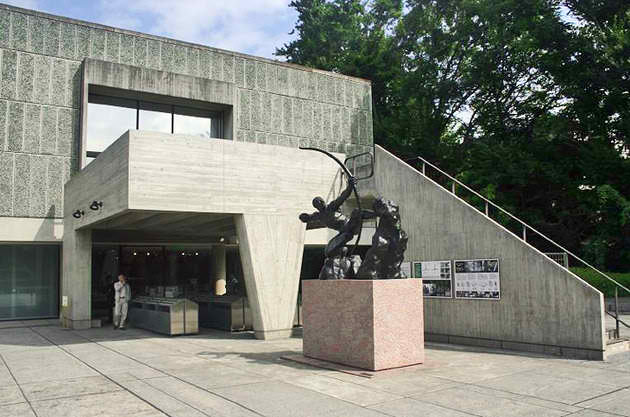
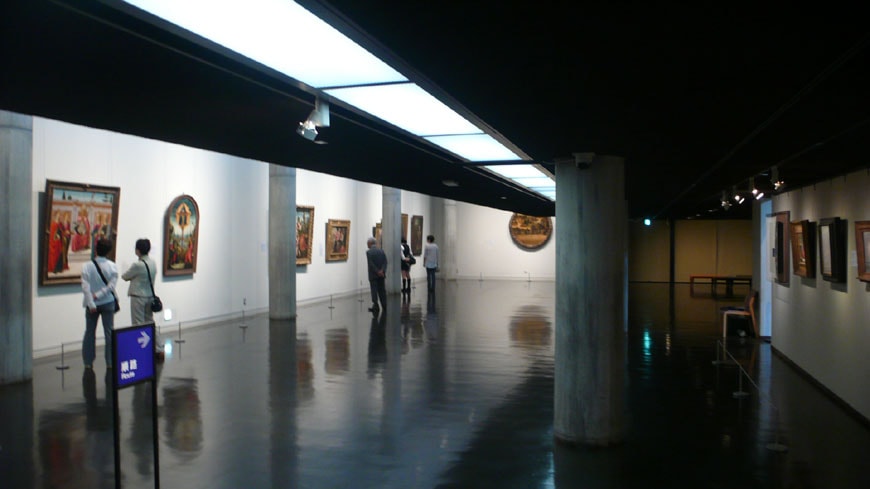
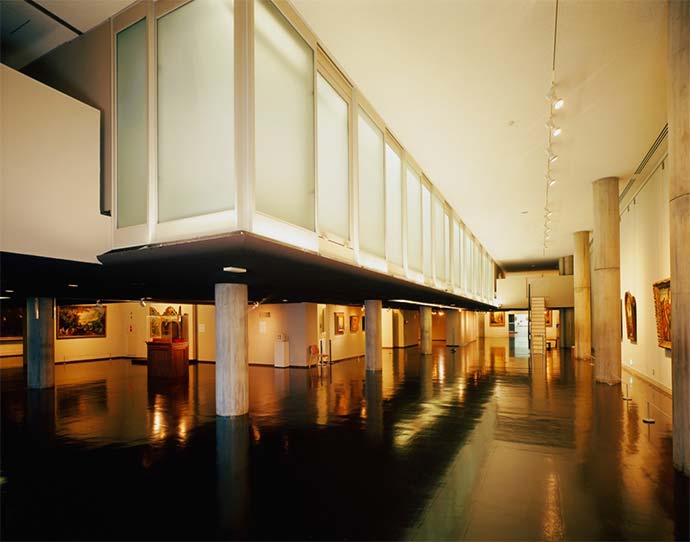
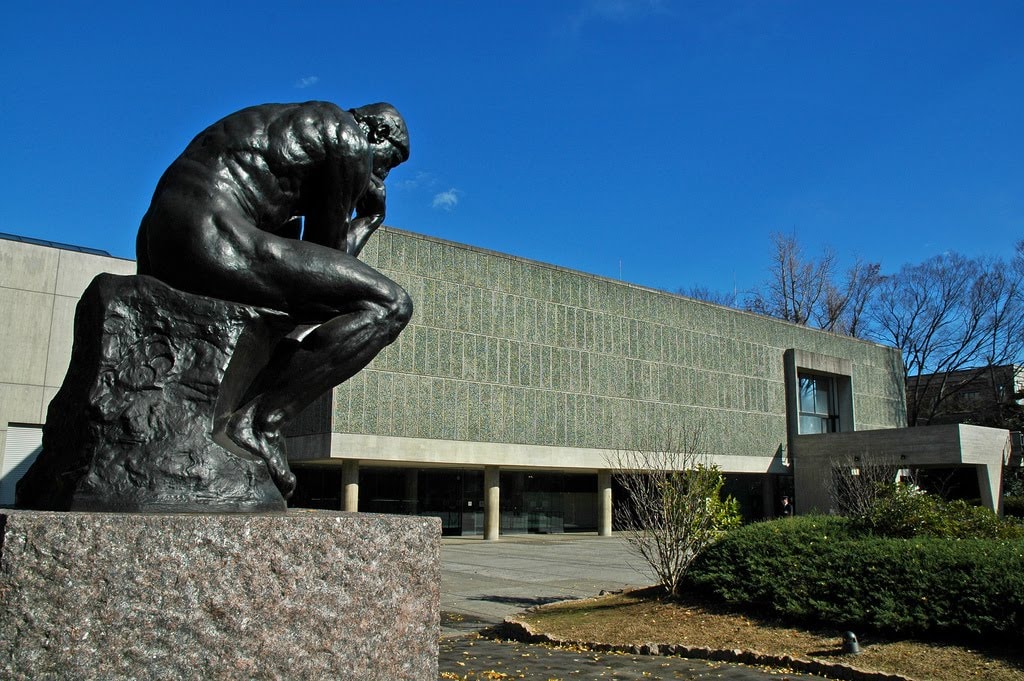
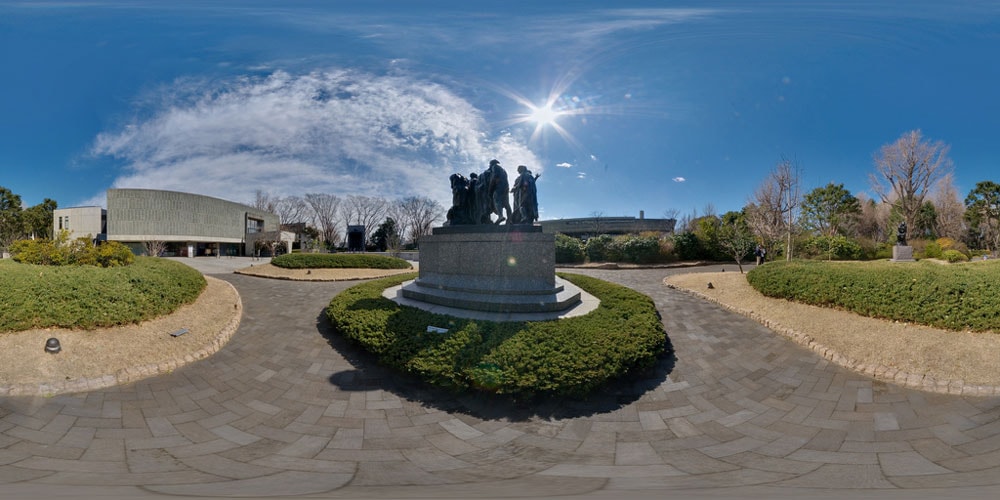
The National Museum of Western Art, Tokyo is situated in Ueno Park. On display is the Museum's 58-piece Rodin collection, three pieces of which are located in front of the museum, including the Thinker, and the Gates of Hell.
The National Museum of Western Art, Tokyo was established in 1959. Its Main Building is the work of the French architect Le Corbusier (who also worked on the design of the UN Headquarters building). The National Museum of Western Art's collection covers Western paintings and drawings from the 15th to 20th centuries with the emphasis on France and French art, especially Impressionism. The National Museum of Western Art building is part of the transnational UNESCO World Heritage Site of "The Architectural Work of Le Corbusier."
The museum was built to house what remained of the extensive art collection of the shipping mogul and first president of what is now Kawasaki Heavy Industries, Kojiro Matsukata (1865-1950). Matsukata (the third son of a Japanese prime minister of the same name) collected a huge body of Western art in the form of paintings, sculpture (including numerous Rodins, cast from the original molds) and decorative works, as well as a collection of Japanese ukiyoe woodblock prints that got dispersed but has been largely restored.
Matsukata was a personal friend of Claude Monet, and as such had privileged access to many now very famous works. Much of the Matsukata collection was left in storage in Europe before World War II, and much was destroyed in the war. What was left was taken over by the French government after the Second World War, and was donated to Japan in the 1950s.
The National Museum of Western Art also includes an art research library with 27,000 volumes including catalogues, monographs and art reference books.
The National Museum of Western Art is one minute from Ueno Station on the JR Yamanote Line (Park Exit [Koen-guchi]) and within 10 minutes on foot from either Keisei Ueno Station (Main Exit [Shomen-guchi]) on the Keisei Line, Ueno Subway Station on the Ginza Line (Exit 7), or Ueno Subway Station on Hibiya Line (Exit 7).